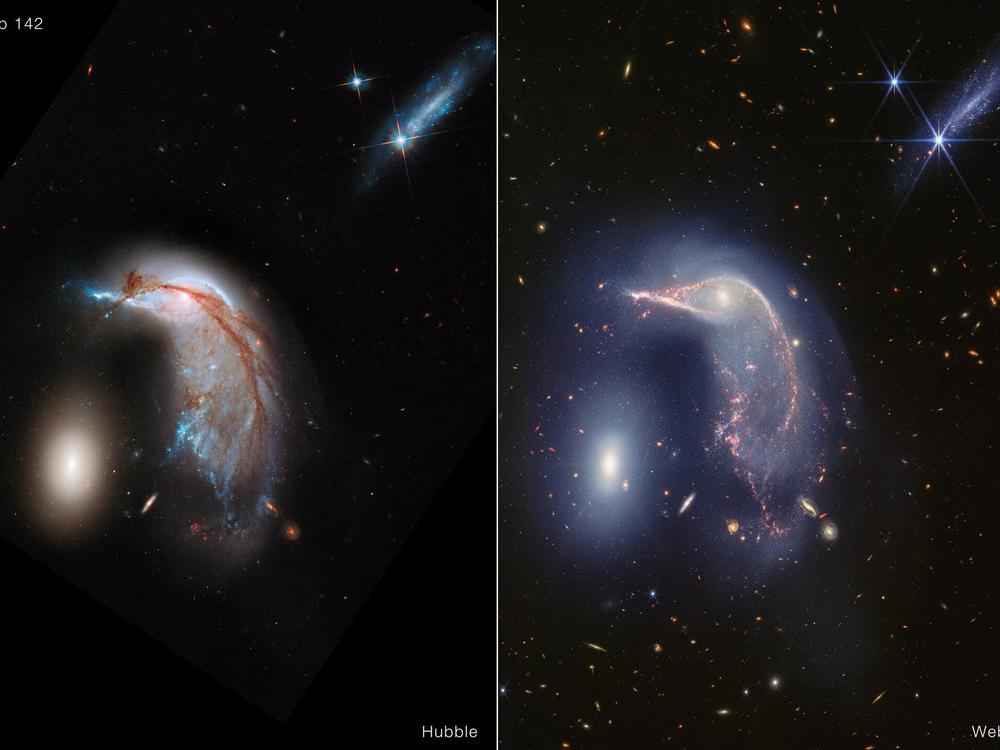Section Branding
Header Content
2 galaxies, the Penguin and the Egg, get a family portrait thanks to Webb Telescope
Primary Content
Like a protective parent, one galaxy looms high over the other, seemingly peering down at its neighbor. The two galaxies are designated NGC 2936 and NGC 2937 — but more famously, they’re known as the Penguin and the Egg.
The team behind the James Webb Space Telescope unveiled the new image of the pair on Friday, showing the two galaxies in more clarity than ever — and marking two years since the first image using the advanced telescope's infrared instruments was released.
“Webb is providing insights into longstanding mysteries about the early universe and ushering in a new era of studying distant worlds,” said Mark Clampin, director of NASA's astrophysics division, “while returning images that inspire people around the world and posing exciting new questions to answer.”
The two galaxies are close together, in galactic terms, and while they’re locked into an interaction with each other, their fanciful names belie their actual ages: In this case of the Penguin and the Egg, it’s the Egg that came first.
The Egg is a compact elliptical galaxy, and like a long-lost episode of The Love Boat, it’s “filled with aging stars,” as NASA notes.
The Penguin, on the other hand, is a spiral galaxy full of gas and dust, allowing it to be “rich with newly-formed hot stars,” as NASA’s Jet Propulsion Laboratory said in 2018, when it released a Hubble image of the pair.
The Penguin’s shape has been distorted and twisted by the Egg over tens of millions of years, in what NASA calls “a slow cosmic dance” that has helped generate new stars along the way.
Despite their vastly different appearances, the Penguin and the Egg have roughly the same mass, according to NASA.
The two galaxies are estimated to be some 100,000 light-years apart; because of their proximity, they’re collectively known as Arp 142. Eventually, after more dancing and gravitational pull in the cosmos, they’ll merge into one object.

